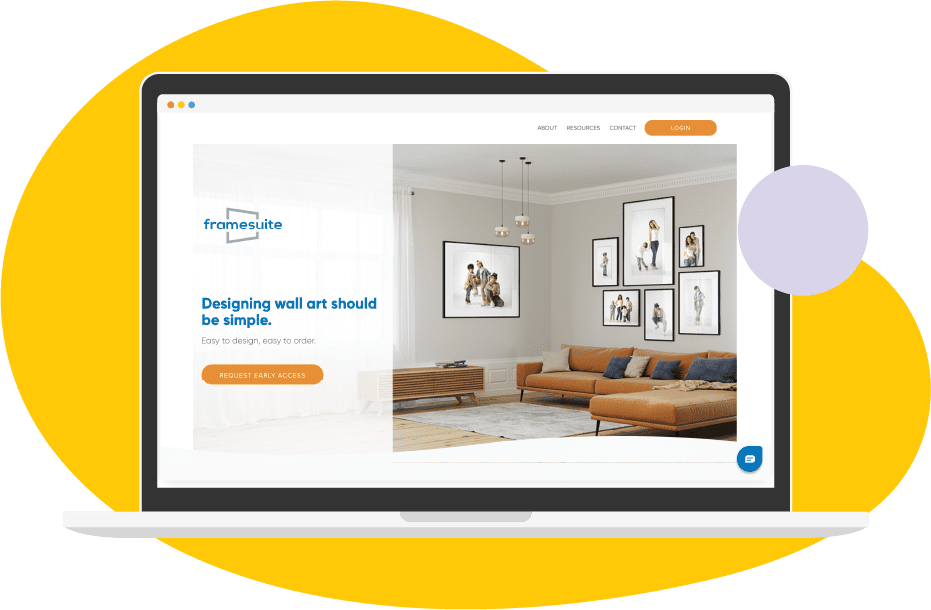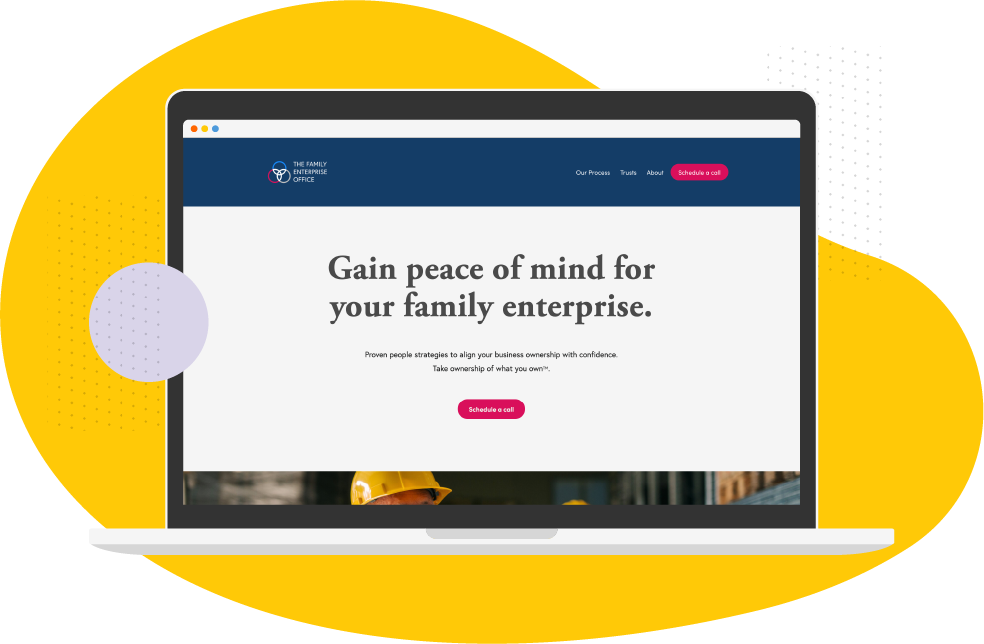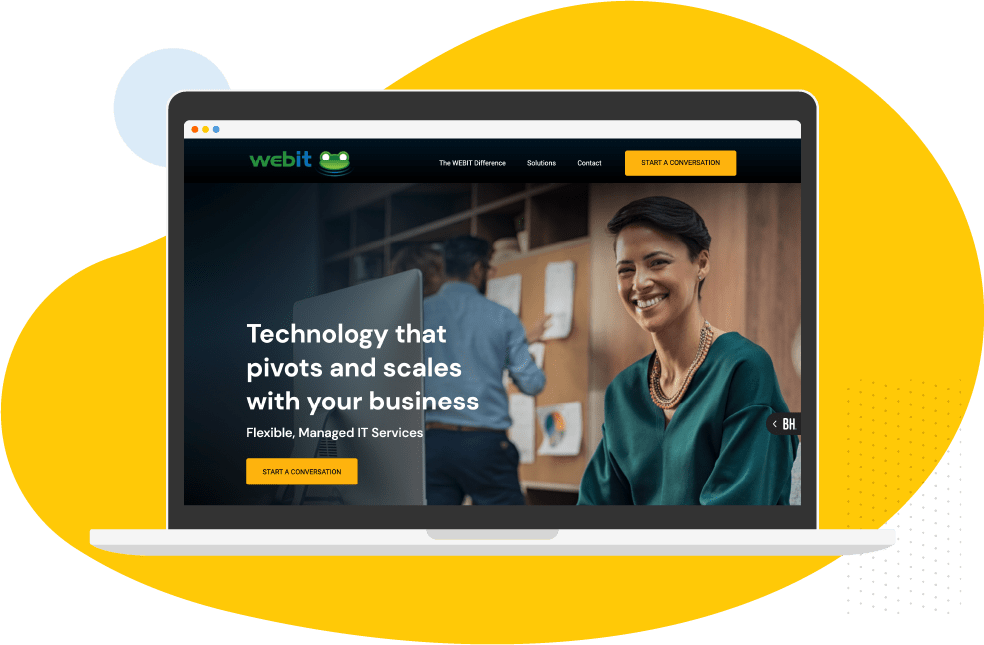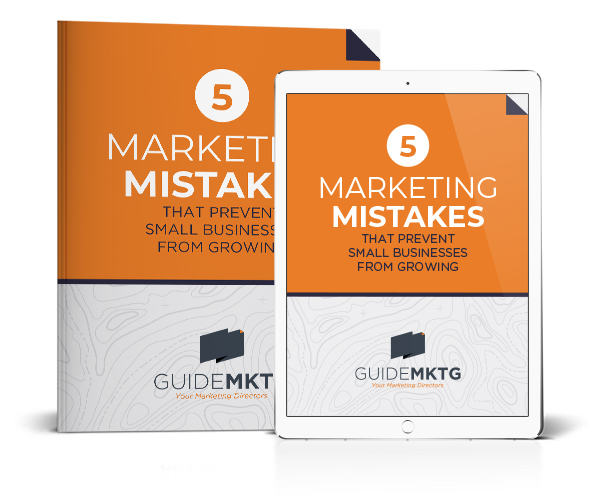When it comes to website creation, business-to-business service providers have a difficult job to do. You have a great service, a highly-trained team, and truly know how to address your customers’ pain points. But on your homepage, you only have a few hundreds words, a handful of pictures, and 1/10th of a second to make a great impression.
Want to engage your site visitors, generate leads, and improve your marketing performance? Read on to learn how B2Bs can leverage their strategically-built website to generate visible results.
A successful business-to-business site starts with storytelling
Whether you’re an online business or have a store front, the home page of your website is some of the most valuable real estate your business owns!
Why?
Because it’s often the first lasting impression your potential customers remember— or don’t.
Your website is typically one of the first touch points potential customers have with your brand. From that page, they’ll almost instantly identify your brand positioning, price point, target audience, and whether you have what they really need.
And that’s where storytelling really shines.
When your B2B home page tells a relatable story that speaks directly to your customer’s problem and offers a suitable solution, your odds of converting that visitor instantly increase.
With a compelling story in place, your customer knows you understand their situation, trusts your expertise, and is more willing to engage your service.
How to tell your site visitors a story with your B2B website
In the most basic sense, telling a story with your website means identifying the key pain points of your target audience, describing the success they’ll experience once their problem is solved, and guiding them towards the unique solution you offer.
Storytelling always positions your target audience as the hero and you as the guide. Your job is to relate, encourage, and support your customers towards success.
In application, this looks like talking about your customer’s key problems throughout your home page, positioning your value proposition as the key to success, and giving them a clear, easy-to-follow call to action.
Using visuals to support your B2B website story
Any visuals you use on your website should enhance the story you tell— not distract from it. Look for visually appealing graphics that show what success looks like. Use creative design elements and animated graphics to hold your visitors’ attention, like simple icons, tasteful colors, and an uncluttered layout.

Our top 3 tips for building a B2B website that converts
Now that you know how crucial storytelling is int he content of your website, let’s look at a few practical tips to help you begin building a helpful, clear, converting web design.
1. The most important part of your site design is “Above the Fold”
‘Above the fold’ refers to the top section of your website that appears the moment visitors load the page on desktop, tablet, or mobile devices.
This small stretch of content includes your main headline and sub-headline, beautiful imagery or compelling video, and your main call to action. It’s your 1/10th-of-a-second opportunity to share your company’s best solution to your customers’ problem, and how that will make their life better.
Not only does your above the fold website content start your story and (hopefully!) hook your target audiences, it directly impacts your engagement metrics.
If this section is not properly optimized and engaging to your customers, you’ll start to notice a rising bounce rate (visitors clicking away from your site without scrolling) and a decrease in conversions.
Let’s talk about some ways you can ensure your above the fold content serves as a powerful tool:
Keep your design simple. Whether you’re using animated graphics, interesting design elements, or a more minimalist design, keep this area extremely clear and targeted. No visual elements should distract from your key headline— only support it!
Make the content engaging. Use an animated arrow to compel your visitor to scroll down, ask a question that piques their curiosity, or lead with a headline so attention-grabbing, they have to keep reading.
Design your content for usability. Above all else, your content should be easy to interact with. That means optimizing your content for web and mobile. It should load almost instantly, fit the screen properly, and function well on every type of device.
When you design your B2B website, keep these practices in mind. They’ll hold your new customers’ attention and encourage them to explore the rest of your website.

2. Make your home page your greatest asset
Your home page should be designed to connect with your target market, relate to their problem, offer them an ideal solution, and guide them through the buyer’s journey process.
Your home page isn’t the place to detain your company’s purpose or business goals, talk about the history of your family, explain every nuance of your pricing plan, or overwhelm your customers with features, benefits, and details.
Allow your hero image, banners, and multimedia elements support the story your copy is telling. Give your visitors multiple opportunities to enter your sales funnel through opt-ins and free resource downloads. And focus your efforts on creating a website that will generate leads you can follow up with through our outreach and email marketing efforts.
These functional minimalism design elements also boost the impact of your home page:
- To keep lengthy sections of text brief, use toggles or “show more” buttons to hide extra text away until needed
- Use frequent, contrasting-colored call to action buttons across your B2B website
- Include testimonials, awards, or well-known customers to establish authority. Include customer photographs when available.
- Use images that actually represent who you are and what you’re doing
- Allow white space throughout your web design to add visual appeal and keep the emphasis on your site copy

3. Your home page is the hero of your B2B website. But your supporting pages have a job to do, too
If you have additional details to share about your products or services, use strategic supporting pages to continue that story.
A great example of this is a pricing plan page. For a services B2B website, adding this page (rather than taking up space on your valuable landing page) gives customers the information they need to compare your plans or products before they buy.
For an e-commerce company, your additional B2B website pages may be product listings or a shopping cart page.
Another great example of a helpful supporting page is your blog. Each blog post you add to your site improves your search engine optimization— your ability to be found in an online search. Hosting a blog on your site is a strong content marketing strategy many B2B websites deploy.

Creating your own B2B website is an essential step for growth-minded businesses. And Lantern can help.
The best B2B websites are well designed, tell a clear story, and directly target the individual consumers your business is looking to reach. But on your own, it’s difficult to develop relatable messaging that resonates with your key audience.
That’s where the team at Lantern comes in. We’ll work together to create messaging that represents your B2B company, speaks directly to your target market, and cuts through the marketing clutter to drive real, profitable results.
Ready for a website that works as hard as you do? Lantern can help. As a Certified Storybrand and 1-Page Marketing Plan agency, we deliver high-impact marketing with real, visible results.





